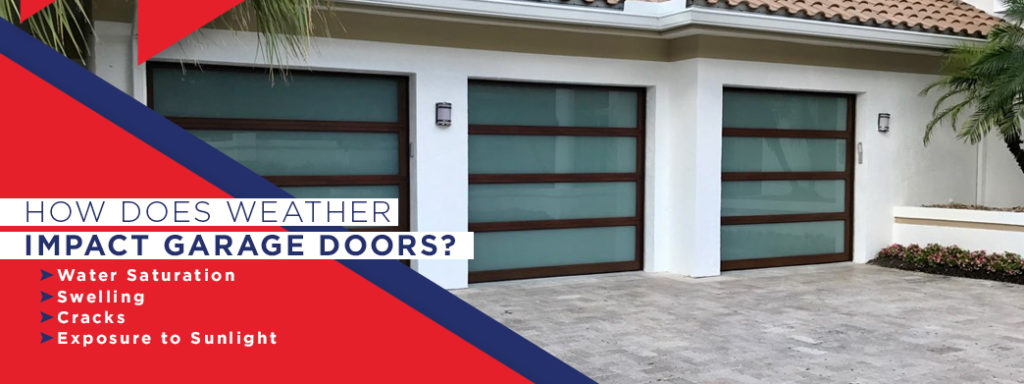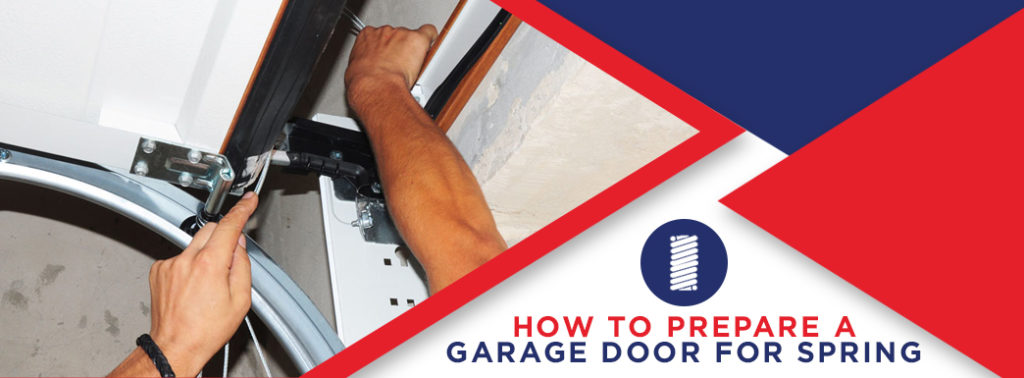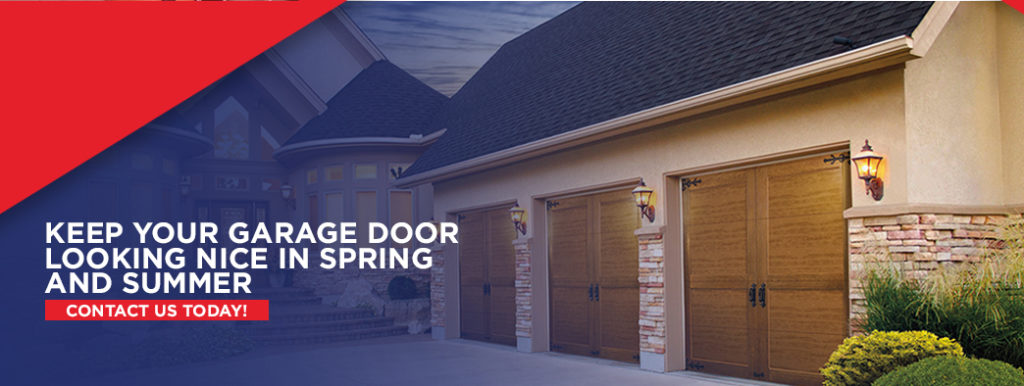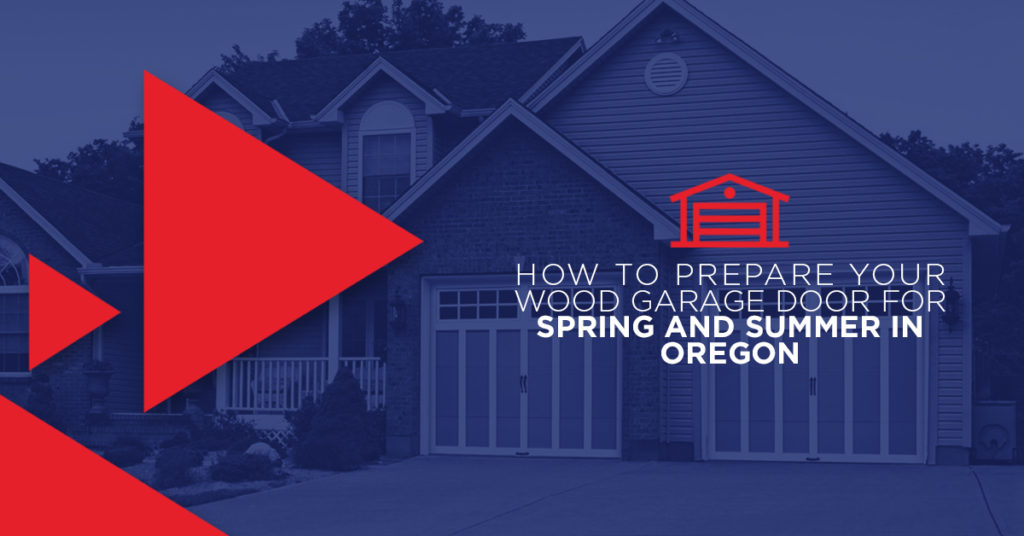
In springtime, a homeowner’s thoughts often turn to ways to spruce up their home. In the middle of all the landscaping and spring cleaning that often comes this time of year, there’s one home improvement project that often gets overlooked — garage door maintenance.
These days, the majority of people use their garage door as the primary entrance to their home. Because you use this door so much, it’s necessary to prepare your garage door for spring and the upcoming summer months as well.
If you have a wood garage door, then it’s even more critical to make sure you’re keeping a close eye on the condition of your door. Wood doors are a beautiful addition to any home, but in cold, moist climates like what we have in Oregon, if you don’t know how to keep a wood door from cracking, you could be in for an unpleasant surprise.
If your home has a wood garage door — or you’re considering purchasing one — it’s important to understand what’s involved with owning and maintaining these works of art. This article covers some of our top wood garage door maintenance tips.
Table of Contents
- How Does Weather Impact Garage Doors?
- Painting and Staining a Wooden Garage Door
- How to Prepare a Garage Door for Spring
Because they’re on the exterior of your home, garage doors will take a beating from the sun and weather your area experiences each year. In the Portland area, wood garage doors are particularly susceptible to water damage. Why?
1. Water Saturation
Wood garage doors absorb water. In wet climates, these doors are constantly exposed to moisture, and they absorb a lot of water. When a door absorbs a lot of water, it becomes heavier. Over time, the additional weight of a water-saturated door adds additional strain to the garage door springs, eventually causing them to stretch or even break.
2. Swelling
The water that wood garage doors absorb also causes the door to swell. When a door swells to be larger than the original size, it becomes more difficult to open and close. This puts a lot of extra strain on the garage door opener and, if left unaddressed, can damage the opener or cause it to wear out and need replacing sooner than expected.
3. Cracks
Wood doors are known to develop cracks as they age, especially if they aren’t serviced regularly. When a door has cracks, moisture can make its way into the cracks. If it’s cold enough for that water to freeze, the ice will cause the crack to expand. When cracks are left undetected over time, this cycle of freezing water and expanding cracks can lead to significant damage.
4. Exposure to Sunlight
In addition to the issues associated with living in a particularly moist climate, sunlight can also damage and affect wood doors, especially if they face east or west and get a lot of direct light during sunny days. Sunlight can trick your garage door sensors into thinking something’s in the way of the door, which causes the sensors to malfunction when you’re trying to put the door up and down. Warm weather combined with a humid coastal climate can also result in the door absorbing moisture more quickly than in drier climates.
Because wood doors are more susceptible to year-round problems in high-moisture areas like Portland’s coastal climate, it’s necessary to make wood garage door maintenance an annual part of your home maintenance routine. Checking the doors and identifying trouble spots is a simple thing to do. However, it’s essential to remember that a professional garage door company should perform most garage door service and repair. When you hire an experienced garage door professional, they can give your door a thorough inspection, identifying any areas of concern that need to be addressed before they become a big problem.
Painting and Staining a Wooden Garage Door
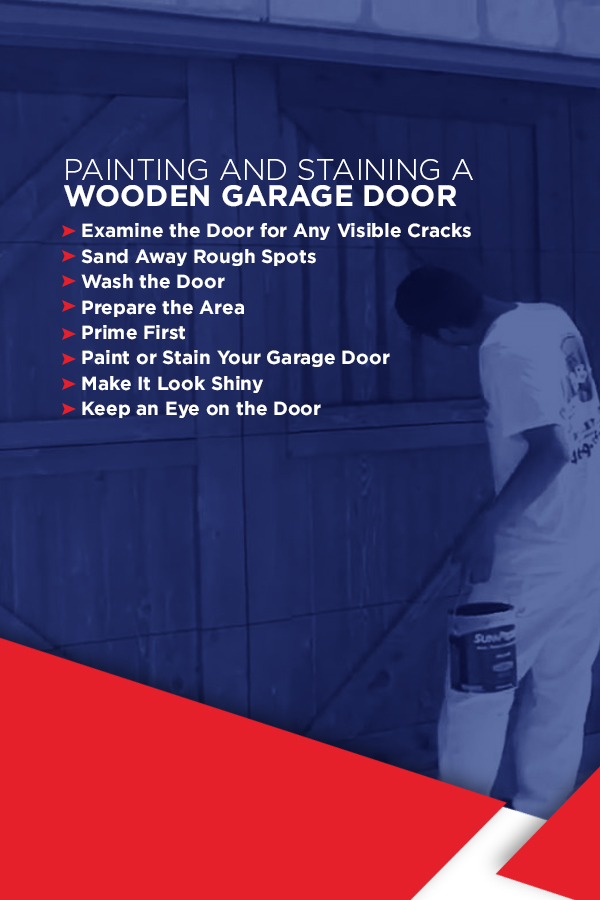 Besides regular maintenance, one of the best ways you can protect and preserve your wood garage door is to paint or stain it regularly. Whenever we mention this to customers, their first question is, “How often should I paint my garage door?”
Besides regular maintenance, one of the best ways you can protect and preserve your wood garage door is to paint or stain it regularly. Whenever we mention this to customers, their first question is, “How often should I paint my garage door?”
There’s no hard and fast number when it comes to frequency. If your garage door faces north or south — meaning it doesn’t get direct sunlight — you’ll probably only need to repaint every five to six years. But, if your door gets direct sunlight throughout the day — faces east or west — then it may be more susceptible to fading, cracks or other weather-related damage. It will need to be repainted more frequently to prevent moisture from breaching the seal of the stain or paint. If you’ve opted to stain your garage door instead of painting it, you should plan to stain and seal your garage door once each year.
Now that you’ve bumped this critical project to the top of your home maintenance list, it’s time to get started. While there are many similarities between the process of painting and the process of staining a garage door, there are also some meaningful differences that you’ll want to be aware of before you get started. Be sure to read through the entire process before you begin.
1. Examine the Door for Any Visible Cracks
If you find any cracks, caulk them, and then allow the caulk to dry completely before painting. While you’re doing this, you can also scrape away any peeling paint or rotted wood on the door. If you need to remove a small piece of wood rot, you can repair it with wood filler. Please don’t skip this step. This preparation process is crucial because it improves the integrity of your door and guarantees a smooth finish after you’re done painting.
2. Sand Away Rough Spots
Once the caulk and wood filler dries, use an electric sander to smooth out any bumps or rough edges left behind. The sander is also a great tool to use if your door has large patches of peeling paint since it might take too long to scrape off large patches by hand.
3. Wash the Door
Apply a degreasing cleaner to the door, and then scrub it down using a large sponge or brush. If you find any patches of mildew on the door, apply a mildewcide as well. Then, rinse the door with a hose and allow it to completely dry. Yes, we do recommend using a garden hose rather than a power washer. Even though your door is made of solid wood, it’s important to protect it and avoid the powerful streams of water that you’ll get on most of the power washer’s settings.
4. Prepare the Area
Once the door is dry, use painter’s tape and masking paper to cover any hardware or windows on your garage door. You’ll also want to lay a drop cloth down along the ground and tape masking paper on the walls alongside the garage door to prevent paint or stain from coming in contact with your siding.
You’ll also want to prepare yourself. When using a paint sprayer, it’s a good idea to wear a mask to prevent from inhaling particles of paint and disposable gloves to make your clean up easier later.
5. Prime First
If you’re staining your garage door, then you can skip this step. If you’re painting, priming is necessary.
The best tool for this job is a paint sprayer. They’re relatively inexpensive, so if you don’t already have one, it’s worth the investment. Fill the sprayer with primer, then apply to the door using a back-and-forth motion, overlapping your previous strokes so there aren’t gaps in between. This will work best if you hold the paint sprayer about one foot from the door. Consult the manufacturer’s directions on the primer to determine how long primer should dry before you move on to paint.
While the primer is drying, remember to clean out your paint sprayer so that the primer doesn’t get mixed in with the paint you’re about to use. After all, you don’t want it to dilute the color you’ve chosen.
For new doors, it’s best to prime all six sides of the door to keep water from seeping in, so keep this in mind if it’s the first time your door has been painted.
6. Paint or Stain Your Garage Door
Once the primer is dry — or you’ve skipped that step because you’re using stain — it’s time to apply paint or stain to your garage door. Using the same back-and-forth technique you used when you were priming, apply an even coat of latex paint or oil-based stain to the garage door. Once it’s covered, allow it to dry. Then, if needed, add another coat to achieve the shade you want. If you’re using stain, you’ll likely only need one coat, but paint may require an extra coat or two to achieve the color you want.
Also, while we do recommend using a paint sprayer for this task, you can use a roller or brush. Just be careful to apply even brush strokes and take your time so that it looks good when you’re done.
7. Make It Look Shiny
If you’ve applied stain to the door and you want it to have a glossy look, you can apply a layer of polyurethane or exterior varnish. Just be careful because these products will peel over time, which means you’ll need to stain again even sooner.
8. Keep an Eye on the Door
Once your garage door is dry, you’ll want to keep a close eye on the paint or stain to see how it wears over time. In general, staining requires more maintenance than a paint job, so plan to refinish your door once each year to keep it looking nice and new. Since wood doors tend to crack in the heat and sun, it’s a good rule of thumb to plan to stain your door in the spring after the rains clear but before it becomes too hot. That way, your door will be ready to withstand the sunshine and heat of summer.
Besides staining or painting, you can plan to perform seasonal garage door maintenance to keep your garage door in good shape and prepare it for the warm weather and sunshine that accompany spring and summer.
1. Inspect the Door and Its Opener
Take a few minutes to look over your garage door. Take note of any cracks, dents or dings that might allow moisture to worm its way into the wood. Also, note any places in the existing paint or stain that seem to be wearing or peeling.
Once you’ve inspected the door, take some time to look at your garage door opener. Inspect the tracks and springs to make sure they’re operating smoothly. You can even run the door up and down a few times, listening for any noises that might indicate that it’s not moving as smoothly as it should.
2. Replace the Batteries in Your Garage Door Opener
Your garage door opener is most likely wired into your home’s power supply, but some models have a battery backup feature in case your home loses power. As you’re inspecting your door, make a point to check to see if your backup batteries are charged and change if needed.
3. Clean Your Garage Door
Even if it doesn’t need a fresh coat of paint, make a point to clean your garage door each spring. Garage doors are subject to dirt and rain and debris on an ongoing basis. Keeping them clean prevents the debris from getting stuck in the garage door opener’s track or doing damage to the door itself over time.
4. Add Lubricant to Moving Parts
Repairing a garage door or opener can be dangerous if you don’t know what you’re doing. But lubricating the moving parts of your garage door opener helps prevent the need for repairs in the first place. Apply a lubricant to the hinges, spring, rollers and bearings to keep everything operating as it should. Of course, if you aren’t sure where these are — or you aren’t comfortable doing it yourself — then it’s a good time to schedule a service call with an experienced professional.
5. Know When to Call a Professional
DIY home improvement projects are on-trend right now, but when it comes to your garage door, it’s dangerous to do repairs and maintenance yourself if you don’t have experience working with garage doors. Yes, painting and staining a door are things that homeowners can do without much trouble. But, if you suspect that your door is broken or the garage door opener needs repair, it’s time to call a professional garage door company for help.
Even if your door appears to be in good working order, it’s not a bad idea to have a garage door company you can call with questions, like, “How often does my garage door need to be serviced?” or “What do I do if my wood garage door cracks?”
Keep Your Garage Door Looking Nice in Spring and Summer
Even in our area, many people aren’t aware of how humidity affects wood garage doors. It can be a challenge to keep them looking nice and new, but their classic beauty is worth the effort.
When it comes to seasonal garage door maintenance, a little elbow grease is all it takes to keep your door in working order. But, sometimes things happen, and you need to call a professional garage door company for a repair. Best Overhead Door is the premiere garage door company in Portland, Ore., specializing in sales and repair of residential and commercial garage doors. A Portland fixture for nearly three decades, Best Overhead Door offers experienced service at reasonable prices. And, if your door can’t be repaired, then we’re here to walk you through the process of selecting a high-quality, long-lasting replacement.
If your garage door needs a tune-up or you’re in the market for a replacement, look no further than Best Overhead Door. We offer estimates via phone, email and video conferencing or we can bring our showroom to you with hand samples and brochures. Schedule service or request an estimate online or by calling (503) 620-1205.
Related Posts
Does My Garage Door Need Regular Maintenance? Do Garage Doors Need to Be Inspected? How to Paint & Maintain Your Custom Carriage House Garage Door Tips for Keeping Your Garage Organized and Clean Year-Round

